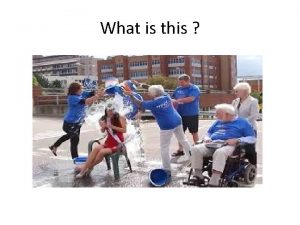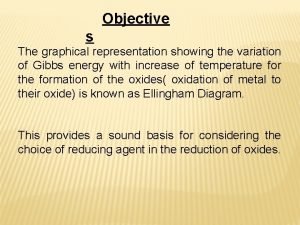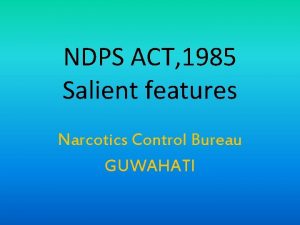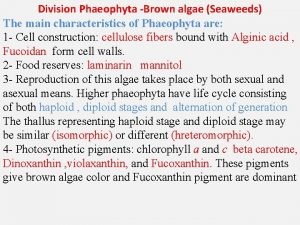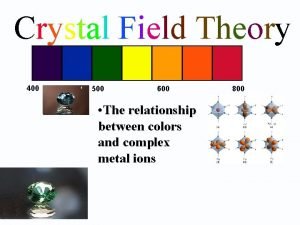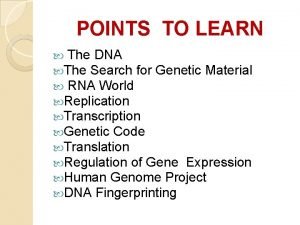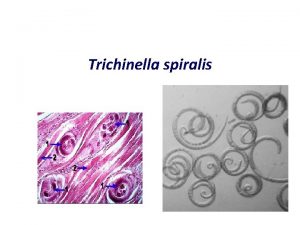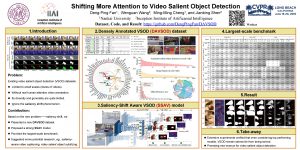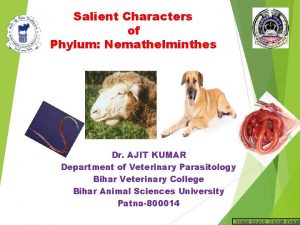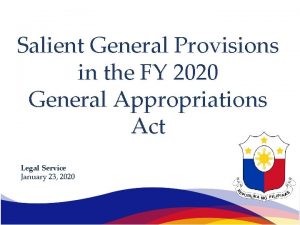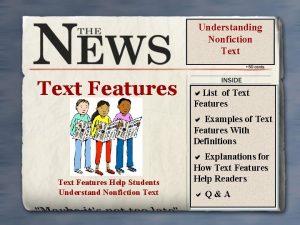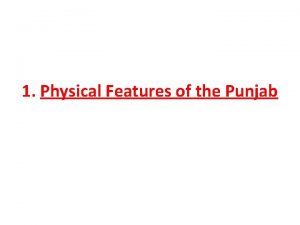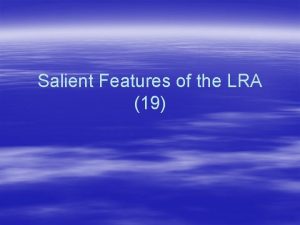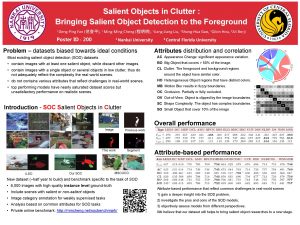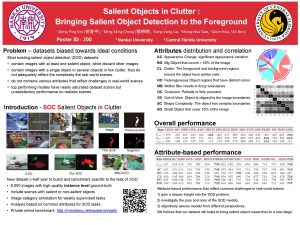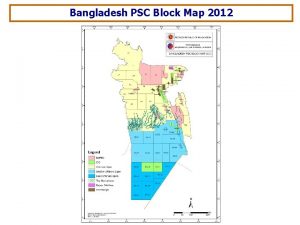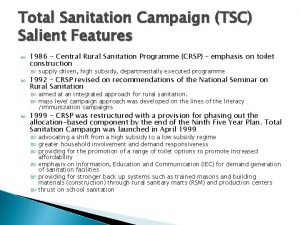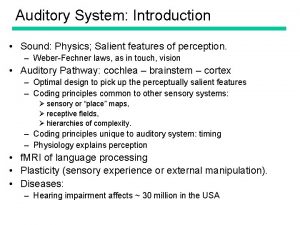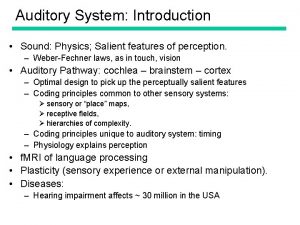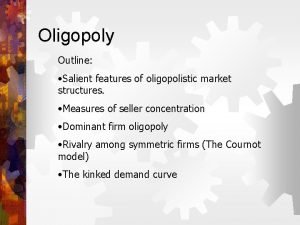What is this List salient features Case History






































- Slides: 38

What is this ?


List salient features Case History • • A 50 year male Progressive loss of power in upper limbs and lower limbs over 4 years • Of late he has developed difficulty in swallowing • On examination , he has small muscle wasting in both the hands and loss of tendon jerks • She has extensive fasciculations in both upper limbs and lower limbs • Lower limbs have hypertonia, exaggerated jerks and extensor plantars Problems

Google image

List some causes of small muscle waiting

www. Google Images

Motor Neurone disease Dr Prabha Adhikari

15 minutes • • • What s motor Neurone disease Aetiology Clinical types Clinical features Prognosis Treatment

What is MND and Why • Disease of unknown cause -5/lakh • Degeneration of motor neurone , in the spinal cord, cranialnerve neuclei and pyramidal neurones cortex • 10%familaial • 20 % of them Gene superoxide desmutase 1 mutation • 95%-viral infections, trauma, electric shock , toxins

Clinical types • Progressive lateral sclerosis –Upper motor Neurone with wasting and fasciculation and exaggerated jerks • Progressive Muscular Atrophy-lower motor

Bulbar and Pseudo bulbar Progressive bulbar palsy • • lower motorflacid tongue Palatal reflex absent Wasted tonue with fasciculations Pseudobulbar palsy-upper • jaw jerk exagerrated • spastic tongue, • palatal reflex +

Clinical features • • • After age 50 Males Limb weakness, cramps Swallowing difficulty /difficulty speech Wasting

Signs • Wasting of muscles • Fasciculations • Power: Weakness of limb muscles , palate, tongue-dysphagia and nasal regurgiatation • Wasting of tongue muscles with dysarthria • Palatal palsy • Tone : Spasticiy in lowe r limbs

Deep Tendon Reflexes • • • Upper limbs may be diminished Lower limb exaggerated Extensor plantar No sensory loss No intellectual Impairment Symptoms start in one limb and spreads

DDInvestigations &Treatment • Differential • Diabetic amyotrophy • Spinal cord compression • Multifocal motor neuronopathy • Poliomyelitis NCV and EMG Fasciculations and fibrillation Deneravtion potential , reduced action potential

Glutamate antagonist • Riluzole 100 mg per day–prolongs life by 2 months • Nerve growth factors • Palliative care • Mechanical aids, communication aids • NIV • Feeding gastrostomy

MCQs 1. Motor Neurone disease has all the following features EXCEPT a. Lower motorneurone signs b. Sensory loss c. Upper motor neurone signs d. Dysphagiaand dysarthria

Question 2 • The most important diagnostic clinical feature of MND is • A. Exaggerated jerks • B. wasted muscles • C. dysphagia • D. Fasciculations extensive

Drug for MND • • A. Donepezil B. Riluzole C. Memantine D. Galatamine

Infections of the nervous system • A 28 year old male presents with high grade fever , head ache , projectile vomiting of 3 days after which he is comatose • Discuss with your neighbour for 5 minutes as to how you will examine such a patient

Lesson Plan • Solve the case • List organisms that can lead to bacterial meningitis and antibiotic choices • Describe clinical features and do three tests • Describe CSF findings • List CSF tests • List complications • List late complications

Signs • Patient was in Coma with E 1, V 1, M 2 with GCS 4/15 • Neck stiffness + • Kernigs sign positive • Brudzinski`positive


On eaxmination • Purplish rash was found • BP was 90/70 mm of Hg • Creatinine was 2. 5 mg

What action would you suggest • Options a. Lumbar puncture? b. CT Scan followed by LP c. MRI followed LP d. MRI alone

Lumbar puncture done after CT What is your diagnosis if following results 1250 Neutrophils , protein 300 mg, sugar 20 mg 320 lymphocytes , protein 500 mg, 40 mg 20 lymphocytes, 150 mg, 100 mg 10 lyphocytes , 100 mg

Ventriculomegaly with sulcal effacement

Treatment recommended • • Ceftrioxone 2 G IV BD Benzyl Penicillin 20 Lalks 6 th hourly IV Ampicillin 2 G IV 4 th hourly Chromaphenicol 1. G IV 6 th hourly with Vancomycin I GIV twice aday

Meninigitis with rash • Hypotension : Waterhouse Friedrickson syndrome • Benzyl Penicillin and corticosteroids

Meningitis without rash 18 -50 • Ceftrioxone 2 G IV BD • Sterp Penumoniae resistant to Penicillin • Vancomycin I G IV Bdor Rifamipicin 600 mg

>50 years • • Alocoholic, diabetic , immunosuppression and Brain stemsigns Listeria Monocytogenes Ampicillin 2 G IV 4 th hourly

Complications • • • Shock Waterhouse Friedricksons syndrome Sepsis DIC Renalfailure Peripheral. Gangrene Arthrits Pericarditis Coning ARDS

Sequale • Deafness

Anaphylaxis to betalactum • Chloramphenicol 1 G IV 6 th hourly • Vancomycin 1 G IV BD

Organism and Antibiotic Organism Antibiotic • N. Meningitis • Strep Pneumoniae • Strep Pneumonaie res to betalactums • H Influenza • Listeria • Strep suis • Benzyl Penicillin 20 L 4 thrly • Ceftrioxone 2 G IV BD • Vanco or Rifampicin with ceftrioxone • Ceftrioxone 2 G BD • Ampicillin 2 G IV 4 th hrly • Chloramphenicol

Adjunctive steroids • • Dexa methsone prevents deafness 8 mg 6 th hourly or 8 th hourly Decreases raised ICT Improves head ache

Prevention • Oral Rifampicin 600 mg BD or Ciprofloxacin 500 mg for adult contacts and all children • Vaccines for Group and A and C

Assignment –skills • How to do lumbar puncture and remove a sample of CSF –expected complications and contraindications • How many bottles will you remove ? • Where will you send ? • Emergency treatment • What other investigations • What will you monitor ? • Where will you admit such a patient •
 Salient features
Salient features Multi tasking operating system
Multi tasking operating system Salient features of income tax act 1961
Salient features of income tax act 1961 Ellingham diagram is a graphical representation of
Ellingham diagram is a graphical representation of Salient features of operation blackboard
Salient features of operation blackboard Salient features of ndps act 1985
Salient features of ndps act 1985 Brown algae reproduction
Brown algae reproduction Crystal field theory salient features
Crystal field theory salient features Salient features of 1962 constitution of pakistan
Salient features of 1962 constitution of pakistan Salient features of victorian novel
Salient features of victorian novel Salient features of right to education act 2009
Salient features of right to education act 2009 What are the salient features of agency
What are the salient features of agency Fermi temperature formula
Fermi temperature formula Objectives of fema
Objectives of fema Drrm cycle
Drrm cycle Characteristics of the victorian age
Characteristics of the victorian age Salient features of genetic code
Salient features of genetic code Characteristics of indian constitution
Characteristics of indian constitution Trichinella spiralis diagram
Trichinella spiralis diagram Best case worst case average case
Best case worst case average case Shifting more attention to video salient object detection
Shifting more attention to video salient object detection Completeview video client
Completeview video client Global contrast based salient region detection
Global contrast based salient region detection Any size
Any size Salient pole rotor
Salient pole rotor Salient identity
Salient identity Illustrate a salient feature of pdrrm act of 2010
Illustrate a salient feature of pdrrm act of 2010 Salient characters
Salient characters Salient provision
Salient provision List of text features
List of text features Python compiler
Python compiler Punjab physical features
Punjab physical features What are the undefined terms in the axiom set
What are the undefined terms in the axiom set Singly vs doubly linked list
Singly vs doubly linked list Singly vs doubly linked list
Singly vs doubly linked list List g shows list of
List g shows list of Fungsi linked list
Fungsi linked list Select list item list index too large
Select list item list index too large Difference between short case and long case
Difference between short case and long case
